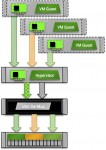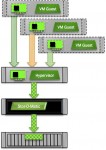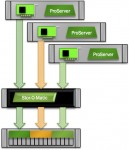Virtualization has disrupted the I/O path, reducing the value of enterprise storage arrays. But all is not lost: An effort is afoot to make things right by increasing communication between hypervisor and array and demultiplexing data before it is stored.
Computer History
Considering the history of computing, from the enterprise to the home.
The I/O Blender Part 2: What Does Virtualization Do?
Virtualization is a disruptive technology in every sense of the word. By abstracting and simplifying physical resources, virtualization enables dynamic utilization. But this “translation†from physical to virtual disrupts the assumptions that enable performance and flexibility of physical devices such as storage arrays.
Personal Storage Just Got More Interesting: Seagate Acquires LaCie
Seagate just responded to Western Digital’s acquisitions of Hitachi’s Global Storage Technologies subsidiary by acquiring LaCie. The €49 million transaction solidifies Seagate’s presence in the retail space, especially on the Apple side of things. In this way, Seagate will use LaCie to offset Western Digital’s G-Tech offerings.
The I/O Blender Part 1: Ye Olde Storage I/O Path
This old-fashioned, predictable storage I/O path was deterministic and decipherable: The server, the switch, and the array all had enough information to do their jobs effectively and efficiently.
Storage Arrays Do A Few Things Very Well
Storage arrays are big, expensive, and difficult to manage. Plus, concentrating storage in a single device puts everything at risk if there is an outage. So why buy a storage array at all? Arrays do a few things very well, and this often makes up for the difference, on balance.




